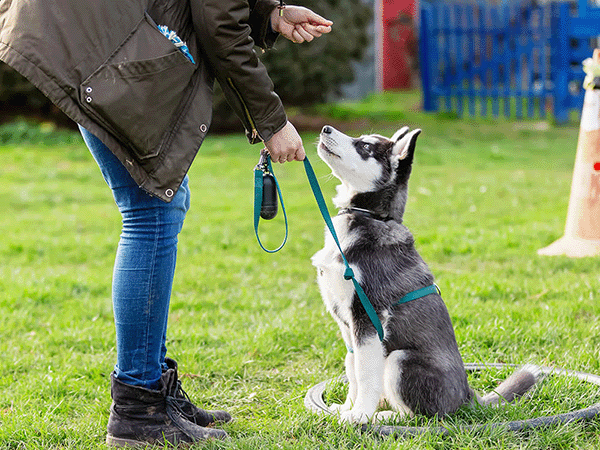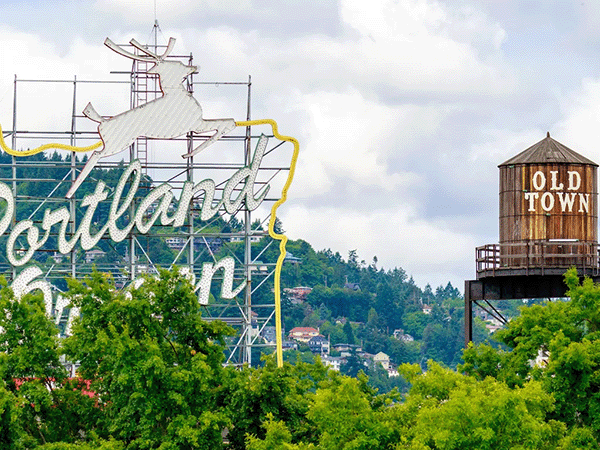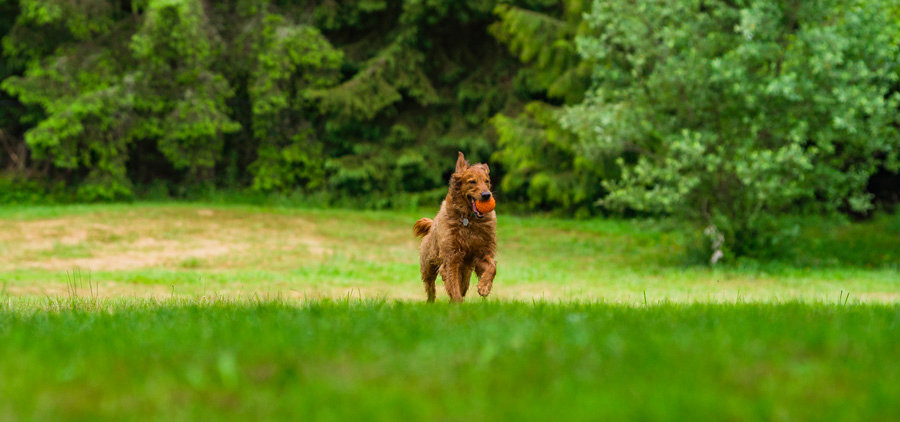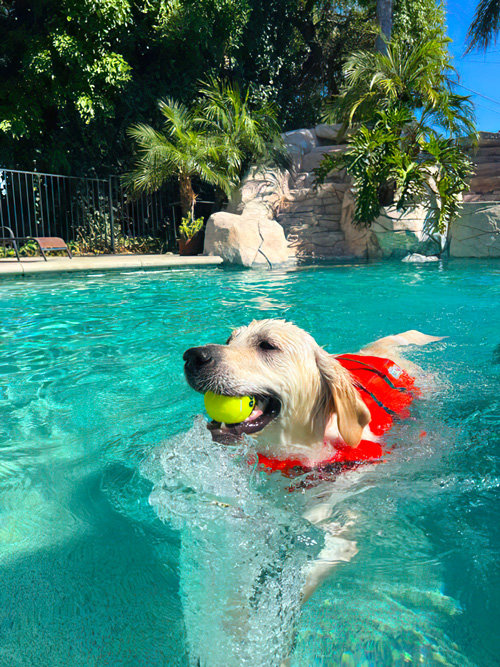Dog Clicker Training 101: A Comprehensive Guide

* All Sniffspot articles are reviewed by certified trainers for quality, please see bottom of article for details *
Heard of clicker training for dogs but not sure where to start? This dog clicker training guide breaks down this positive reinforcement method step by step. Learn how clicker training works, what you'll need, and exactly how to teach your dog new behaviors. We'll even cover troubleshooting and keeping training positive. Ready to build a stronger bond with your dog? Let's go.
Here’s an introductory guide to training your dog to perform a range of behaviors with the help of a clicker: a small plastic device that makes a distinct sound when you press its button. We promise it’s less complicated than it sounds.
What is a dog clicker?
Even if you’ve heard of clicker training, you may never have seen an actual clicker before! It can be an incredibly helpful training tool.
Clicker training uses a small plastic device that makes a little clicking noise whenever you press a button. Clickers usually come with some kind of fastener that can go on a keychain or belt loop and are roughly the size of a flash drive (so they’re convenient to carry during training sessions, walks around the neighborhood, or while just hanging around at home).
You can easily find clickers on the Internet or at your local pet store. Many force-free or positive reinforcement training businesses also offer their own branded clickers to their clients for free!
Key Takeaways
- Clicker training clearly marks desired behaviors, making learning more efficient: The distinct click pinpoints the exact moment your dog performs correctly, facilitating faster understanding. Start by associating the clicker with treats and stay consistent.
- Short, positive sessions in calm environments are key for success: Keep training brief and fun, focusing on one behavior at a time. Gradually introduce distractions as your dog progresses, rewarding small steps toward the desired behavior.
- Clicker training isn't a universal solution, so patience and flexibility are essential: While effective for many, it may not suit every dog. Consider your dog's personality and learning style, and be open to exploring alternative methods if needed. A positive approach is always crucial.
What is clicker or marker training?
Clicker training is a type of marker training. Okay, so what’s marker training? It’s where you use specific signals — called reward markers — to help your dog learn more clearly.
In technical terms, a reward marker is a conditioned stimulus that predicts a primary reinforcer. Put more simply? A reward marker is a sound or signal that “marks” exactly what your dog did to earn their reinforcement. One of the top benefits of clicker training: It makes it possible for us to communicate clearly during training sessions even if we’re unable to deliver a treat precisely when our dogs offer the right behavior. (More on that later.) That’s why marker training was so handy for marine mammal trainers who had to wait until their animals swam to the edge of the pool to physically reinforce the behavior with food.
What exactly are reinforcers (commonly called rewards)?
When we ask our dogs to work for us, it’s only fair we pay them. Reinforcers (often called rewards in everyday conversation) are things 1) our dogs love that 2) are easy for us to give them during a training session.
Common reinforcers include:
- Store-bought dog treats
- Small pieces of human food (like meat or cheese, which are often favorite tasty treats)
- Your dog’s kibble (if they’re particularly food motivated, have a sensitive stomach, or you need to be calorie conscious)
- A favorite toy
If possible, let your dog decide what they like best. At the start of your training process, consider setting out multiple rewards from food treats to toys, seeing which one they go to first, and choosing that to teach new behaviors! (You can also vary between a few favorites to keep them interested.)
The more excited your dog is for their reinforcer, the more motivated they’ll be during your training session.
Important note: Not every reward is always reinforcing
Our dogs are the ones who decide what is and isn’t reinforcing to them. Just because we offer them something we think they should like — we feel like we’re giving them a reward — doesn’t mean it will actually increase the desired behavior moving forward! Many trainers use “reward” and “reinforcer” interchangeably, but this is a helpful distinction to keep in mind (especially if your dog is struggling with training).
Other common reward markers
Clickers aren’t the only reward markers, but they are a common one — especially useful because the sound always sounds the same no matter what environment or mood you’re in (not something most of us can say about our voices). Other popular reward marker options include:
- Verbally saying the word “click”
- Short, uncommon sounds like “yip”
- A thumbs up (particularly useful for deaf dogs)
- Other easy-to-make noises
There are pros and cons to each marker choice — no one marker is inherently better than the others. What matters is that you pick one that works for you and stick to it! Consistency is key.Alternative Markers for Hearing-Impaired Dogs
For dogs that are hearing-impaired, traditional clickers aren't effective. Luckily, several alternative markers work just as well for communicating desired behaviors. A popular option is a simple thumbs up, which is particularly useful for deaf dogs. This visual cue clearly signals that the dog has performed the desired action. You can also use a distinct hand signal, but make sure it's easily repeatable during training sessions.
Clickers are common because of their consistent sound, but other markers can be just as effective. Some trainers use verbal cues like the word “click,” or short, uncommon sounds like “yip.” The key is choosing a marker that works for both you and your dog and using it consistently. Remember, "there are pros and cons to each marker choice — no one marker is inherently better than the others. What matters is that you pick one that works for you and stick to it! Consistency is key." For more training tips, check out our resources on top dog trainers.
How to Clicker Train a Dog
Although you can certainly hire a trainer, clicker training a dog can easily be started at home. Here are some very simple steps to start a clicker training program with your dog.
Do some clicker training prep work.
Get your ducks in a row by making sure you have some of your dog’s favorite reinforcers on hand. 20-30 bite-sized pieces of food should be enough for your initial session!
Remember: You’re going to go through lots of treats, so keeping them small or using some of your dog’s existing daily food is crucial. You don’t want your dog or puppy to gain unhealthy weight (and put pressure on their joints) just because they’re enjoying clicker training.
“Charge” your dog’s reward marker.
Your dog or puppy has no clue what the clicker is until you teach them! To make sure they understand that your marker sound predicts a reward, you can spend a few sessions conditioning them to the stimulus. This is called “charging” your marker.
You can charge your dog’s clicker by:
- First pressing the button to make the noise
- Pausing for a second
- Then giving your dog their reward — this turns your clicker sound into a predictor of good things to come
- Repeating multiple times!
Eventually your dog will start to respond to the noise itself — they might run towards you before you even reach for their treat. This indicates that they’re forming the right association.
Maintain a Positive Association Even with Accidental Clicks
In clicker training, the goal is to create a strong positive association between the sound of the clicker and the rewards that follow. This association is crucial for effective training, as it helps your dog understand which behaviors earn reinforcement. But accidents happen—we've all been there! Sometimes you might click at the wrong moment.
Even if you accidentally click, maintaining that positive association is key. Respected dog trainer Kikopup emphasizes that "Even if you accidentally click, give a treat to maintain the positive association." So, whenever you click, intended or not, follow it up with a reward. This helps your dog continue to see the clicker as a positive signal, reinforcing that good things happen when they hear that sound.
The clicker's sound itself becomes a powerful communication tool during training. The click clearly marks the exact moment your dog performs the desired behavior, even if you can't deliver a treat immediately. The American Kennel Club explains how effective this can be: "The clicker's sound becomes associated with a reward, making it a powerful tool for communication during training."
By ensuring every click leads to a reward, you help your dog maintain a positive attitude toward training, which is essential for their motivation and success. For more tips on positive reinforcement training, check out Sniffspot's dog training resources.
Start using your clicker in training sessions!
Once your dog is conditioned to your clicker, you can start using it in training sessions to teach new skills.
Begin with Known Behaviors
Start with actions your dog already knows, like “sit” or “stay.” This helps them understand the connection between the click, the behavior, and the reward. For example, if your dog already reliably sits on cue, you can ask for a sit, click the instant their rear touches the ground, and then give them a treat. Repeating this process a few times will solidify the clicker as part of the training process. Fromm Family Pet Food recommends this approach for clear communication.
The Importance of Precise Timing
Click the instant your dog performs the desired behavior. This precise timing is crucial because the click marks the exact moment of the good behavior. The clicker acts like a camera, capturing that specific action and communicating to your dog, “Yes! That’s exactly what I wanted!” A delay, even a small one, can confuse your dog, so practice your clicking speed. Karen Pryor Clicker Training emphasizes this timing for effective learning.
Luring: Guiding Your Dog into Position
Use a treat to guide your puppy's nose into the desired position (like a sit or down). Click and treat when they get it right. Imagine you’re showing your dog a delicious snack and using it to gently move their body into the correct posture. As soon as they achieve the position, click and give them the treat. This method is fast and effective for teaching new positions, but it does require removing the lure later on, so they learn to perform the behavior without the food guidance. This luring method is a popular way to introduce new behaviors.
There are two main methods of clicker training
There are two primary ways to clicker train. Either click your dog offering a specific behavior on their own (capturing) or gradually build a captured behavior into a new behavior (shaping). Unlike many other training approaches, clicker trainers usually remain silent until we are confident the dog knows the behavior we are waiting for. Trainers typically add the cue once the dog offers the desired behavior 10-15 times per minute.
Mark the behavior as soon as you see it
It’s important to mark the right behavior the instant your dog performs it. Accurate timing makes for more effective teaching! And remember to always follow your marker with a reinforcer. You have a few seconds to deliver reinforcement, give or take, to keep up your dog’s conditioned association. The clicker is also known as a “bridge” because it buys dog trainers time between when the right behavior is marked (immediately when they do it) and delivery of the treat (which comes a little afterward).
You can mark complex behaviors during advanced training sessions or just simple things throughout the day, like your dog offering you eye contact on a walk. Be sure to only work with one behavior per individual training session to avoid confusion, though.
Don’t be afraid to mark small moves toward the desired behavior.
Keep in mind that your dog doesn’t need to exhibit absolute perfect behavior for a reward. You can shape up small steps in the right direction! For example, if you want to get your dog rolling over, you might mark when they first start to roll onto their side even if they aren’t fully completing the trick yet.
When you give your reward, be sure to offer plenty of praise as well. Dogs, like humans, really respond to excited praise so the more you offer, the faster your dog will learn!
Shaping: Breaking Down Complex Behaviors
Shaping is a powerful technique in clicker training, allowing you to teach your dog complex behaviors by breaking them down into smaller, manageable steps. This method involves reinforcing successive approximations of the desired behavior. You reward your dog for making progress toward the final goal, even if they don’t get it perfect right away. For instance, if you’re teaching your dog to roll over, you might start by marking and rewarding them for simply lying on their side. Check out this post on teaching a dog to roll over for more specific steps.
Timing is crucial in shaping. Accurate timing makes training more effective. Always follow your marker with a reinforcer to maintain your dog’s understanding of the behavior you are encouraging. The clicker acts as a bridge, marking the exact moment of the desired behavior, even if you can't deliver a treat immediately. This precise communication is key to effective learning.
Introduce cues after your dog consistently performs the behavior, often around 10-15 times per minute. This practice ensures your dog understands what you’re asking before adding verbal commands. Shaping helps your dog learn complex behaviors and builds their confidence and motivation, making training fun for both of you. Sniffspot's dog parks offer a great environment to practice these new skills.
Start varying your reinforcement over time.
The idea of clicker training is not to have your dog respond only to the presence of the clicker or treats. It’s to get them to respond in a range of environments! You start building towards this when you become unpredictable with your rewards.
Here’s how to phase out the consistent clicker reinforcement we start with early on in training: When your dog responds to your vocal cue, provide praise, then click, then treat for a period of time. Eventually, the positive feedback of praise can replace the clicker and you can offer praise as reinforcement (provided your dog finds your verbal encouragement to be motivating) with or without physical rewards to keep things interesting.
The reason we use praise for this? It’s important you never click without giving your dog a treat. You want your reward marker to always mean a reward is on the way so it keeps up its “charge” to be used in sessions!
Phasing Out the Clicker: A 3-Step Process
The idea of clicker training isn’t to have your dog respond only to the presence of the clicker or treats. It’s to get them to respond reliably to your cues, even in distracting environments! You start building towards this when you become unpredictable with your rewards. Instead of clicking and treating every single time, you’ll start to wean your dog off the clicker and onto other forms of reinforcement.
Here’s how to phase out the clicker and transition to more flexible reward systems:
- Pair the clicker with praise and a treat. When your dog responds to your vocal cue, offer enthusiastic praise, then click, then give them a treat. Do this consistently for a period of time to solidify the connection between the cue, the click, the praise, and the treat.
- Start fading the clicker. Once your dog consistently responds to the vocal cue, you can begin to occasionally skip the clicker. Offer praise and a treat immediately after the behavior. This teaches your dog that the praise itself signals a reward is coming.
- Transition to praise and occasional treats. As your dog becomes more reliable with the vocal cue and praise, you can start to decrease the frequency of treats. Sometimes offer praise alone, sometimes praise with a treat. This keeps your dog engaged and guessing, preventing them from becoming dependent on treats for every successful behavior. You can also incorporate life rewards, like a quick game of tug or a chance to sniff an interesting spot on your walk.
Important reminder: Never click without giving your dog a treat. The clicker should always predict a treat is coming. This maintains its value and keeps it effective as a training tool.
Transitioning to Verbal Cues
When first starting with clicker training, you’ll primarily use the clicker to mark the desired behavior. As your dog learns, you’ll introduce a verbal cue. Trainers typically add the verbal cue (like "sit," "stay," or "come") once the dog offers the desired behavior 10–15 times per minute. Good timing is essential for effective training. Mark the precise moment your dog performs the behavior with your clicker, immediately followed by a reinforcer. This precise timing helps your dog understand exactly what action earned them the reward. The clicker acts as a bridge, connecting the behavior to the reward even if there's a slight delay in delivering the treat.
Maintaining Consistent Rewards
A key element of successful clicker training is using reinforcers that truly motivate your dog. The more they value the reward, the more enthusiastic they'll be about learning. Remember, rewards don't always have to be food. They can be anything your dog finds enjoyable, such as praise, a favorite toy, or a chance to play. Don't wait for perfect performance to reward your dog. Reinforce small steps in the right direction. For example, if you're teaching your dog to roll over, click and treat when they even slightly lean to the side. Gradually increase your criteria as they progress. And always remember to pair your rewards with plenty of enthusiastic praise. Positive feedback helps build your dog's confidence and strengthens your bond.
Tips for Clicker Training Your Dog
Those are the basics behind clicker training and as you can see, the actual process is pretty straightforward. That said, there are some tricks and tips that make the process easier. There are also quite a few books on clicker training out there but here are a few of the tips we recommend:
Keep your clicker training sessions short
Dog training can be a lot of work for both your companion and for you! It’s a good idea to keep any specific, skill-focused sessions short to avoid pushing either of you to the point of exhaustion. Consider planning for just five to ten minutes of active training a day — and never go longer than five minutes without some form of break.
Some common times to fit this into your dog owner schedule are:
- During one of your dog’s mealtimes
- Before, after, or even during your dog’s evening walk
- On your lunch break if you’re able to work remotely or visit home midday
Try to always end on a good repetition (if your dog is struggling with a new behavior, take a step back and ask them to perform something they know really well) so that you both leave each session on a happy note. This will keep you motivated to dive in next time!
Benefits of Short, Frequent Sessions
Shorter training sessions offer several advantages for both you and your furry friend. Dogs, especially puppies, have limited attention spans. Five to ten minutes of focused work is often more productive than a longer session where your dog might get bored or frustrated. Plus, with our busy schedules, it’s much easier to find five minutes throughout the day than to carve out a larger block of time. Clicker training works well with these short bursts, making it easy to weave into your daily routine. You can even squeeze in a quick session during your dog’s mealtime or on a walk.
Ending on a positive note is also important for keeping everyone motivated and building a positive association with training. If your dog struggles with a new behavior, finish the session by asking them to perform something they’ve already mastered. This helps them end feeling successful and confident, making them more likely to enjoy future training sessions. It also helps you end on a high note, which can make all the difference in staying committed to your training plan.
Practice in a calm environment
Remember that our dogs have very sensitive noses and ears. The busy park is not the place to start teaching a brand-new behavior. Your quiet living room, on the other hand, or a Sniffspot rental they’re already very familiar with? Perfect. Keep distractions at a minimum until your dog shows you they understand what you’re asking. At that point you can slowly increase the difficulty and work up to more challenging environments.
Vary Training Locations for Generalization
Practice in a calm environment. Remember that our dogs have very sensitive noses and ears. The busy park is not the place to start teaching a brand-new behavior. Your quiet living room, on the other hand, or a Sniffspot rental they’re already familiar with? Perfect. Keep distractions at a minimum until your dog shows you they understand what you’re asking. As mentioned on the Sniffspot blog, the idea of clicker training isn’t to have your dog respond only to the clicker or treats—it’s to get them to respond reliably in any environment! Once your dog is consistently responding, you can slowly increase the difficulty and work up to more challenging environments.
Introducing clicker training in different environments ensures generalization. Once your dog understands a cue in one location, practice it in a new spot. This helps your dog learn that “sit” means sit, whether they’re in the kitchen, backyard, or a new private dog park. If you notice your dog struggling in a new environment, go back to basics and reward small steps toward the desired behavior, just like you did when you first started training.
Watch your timing
If your clicker training doesn’t seem to be working, you might be clicking for the correct behavior too late. It’s crucial you respond to your dog’s behavior without hesitation, preferably while not after they’re exhibiting the behavior. The closer you get to the exact moment they respond, the faster they’ll learn.
Pay attention to your body movements
Another reason your dog might be struggling with clicker training? If you’re distracting them with your movements. For example, if you keep your fingers inside the treat pouch throughout the session or reach for a reward before you’ve actually clicked, your dog might focus more on your hand than on the clicker sound.
Our pets are fabulous at pattern mapping our subtle physical cues. It might help to practice some of these techniques (click, tiny pause, then reaching for a treat) outside of sessions with your pup to build the best muscle memory.
Reward Every Click in the Early Stages
In the early stages of clicker training, reward every click, even if it's accidental. This helps your dog solidify the connection between the click sound and good things, like treats or praise. It builds a strong foundation for understanding that the click itself signals a reward is coming. Think of it like teaching your dog the meaning of the word "yes!"—you want them to be thrilled when they hear it.
A common mistake people make is getting stingy with the treats, especially once their dog starts to “get it.” Don’t be afraid to be generous with your rewards in the beginning! You can always start to vary your reward schedule later on, once your dog has a firm grasp of the clicker's meaning. This prevents your dog from becoming overly reliant on treats and keeps them engaged in the training process.
Using High-Value Treats
Not all treats are created equal in the eyes of your dog. Using high-value treats—those extra-special, yummy snacks your dog goes crazy for—can make a big difference in keeping them engaged and motivated during clicker training. Think small pieces of cooked chicken, cheese, or even hot dogs (in moderation, of course!). The more enticing the reward, the more likely your dog is to pay attention and learn quickly. Experiment to find what your dog loves most! For instance, some dogs go wild for freeze-dried liver, while others prefer a simple piece of cooked sweet potato. Check out our article on best dog treats for more ideas.
Patience and Positive Reinforcement are Key
Clicker training, like any form of training, requires patience and positive reinforcement. There will be moments of frustration, both for you and your dog. The key is to stay positive and encouraging. Celebrate small victories, and don't get discouraged by setbacks. Remember, your dog is learning a new language, and it takes time and consistency.
A positive and supportive environment will make the learning process much more enjoyable for both of you. If you find yourself getting frustrated, take a break and come back to it later. For additional support and guidance, consider connecting with certified dog trainers or exploring online communities dedicated to positive reinforcement training. If you’re looking for a trainer near you, check out our list of the top dog trainers in the United States.
Adding Verbal Cues: When and How
Once your dog reliably performs the desired behavior after hearing the clicker, you can start adding verbal cues. For example, if you're teaching your dog to sit, say "sit" just as they begin to lower their rear. Click as soon as they sit, and then give them a treat. Repeat this process several times, and eventually, your dog will associate the word "sit" with the action. This stage is all about creating a clear connection between the verbal cue, the action, and the reward.
Over time, you can start phasing out the clicker and rely solely on the verbal cue. This transition should be gradual, so your dog doesn't get confused. Remember, the goal is to have your dog respond to your verbal commands, not just the clicker. You can also incorporate hand signals along with verbal cues, which can be especially helpful for dogs who are deaf or hard of hearing. Consistency is key, so choose cues that you’ll remember and use them consistently throughout your training sessions. For visual learners, hand signals can be a valuable addition to verbal cues, providing another layer of communication and clarity.
Can you use clicker training to correct bad behavior?
The best way to do use marker training to work on undesirable behavior (we say “undesirable” because “good” and “bad” tend to be human constructs that often go against what comes naturally to our dogs) is to click and reward your dog with delicious treats when they do the right thing instead of the wrong thing. Don’t be afraid to give them guidance ahead of time to maximize their chances of success performing desirable behaviors!
For example: Click and reward your dog when they stay silent if the doorbell rings instead of barking or wait for you to put their food bowl on the ground instead of jumping up and trying to steal it out of your hand. This is where timing is most important, since you want to mark the exact moment they do the “right” thing before they fall into previous undesirable habits (if you wait too long, you might miss the second they’re silent before barking, for example).
Your dog will get the message soon enough that the clicks and rewards only come when they behave well.
Don’t use clicker training to admonish your dog
Remember that clicker training is all about positive reinforcement. If you use it to admonish bad behavior, the dog is going to get confused.
Remember, too, that a dog that doesn’t respond to your cue isn’t pushing your buttons. They just don’t understand what you’re asking for, aren’t sufficiently motivated, or may even be in pain from a health condition. If you notice any sudden behavioral changes in your dog — like if they used to respond readily to certain cues and now hesitate — consider taking them in for a full vet check to be sure.
Criticisms and Drawbacks of Clicker Training
While clicker training can be a valuable tool, it’s not without its drawbacks. Like any training method, it has limitations and may not be suitable for every dog or every situation. Understanding these limitations can help you decide if clicker training is the right approach for you and your furry friend.
Limitations of Clicker Training for Complex Issues
Some trainers argue that clicker training, rooted in operant conditioning, oversimplifies dog behavior. By focusing primarily on external stimuli (the click and reward), critics like Sam Basso suggest this approach overlooks the complexity of canine behavior, including emotions and internal motivations. These internal factors can play a significant role in addressing more nuanced behavioral issues. You can read more of Basso's critique on his website.
For instance, a dog exhibiting fear-based aggression may not respond well to simply being clicked and treated for avoiding a trigger. A more comprehensive approach that addresses the underlying emotional fear may be necessary. Clicker training can be a helpful component within a broader training plan, but it may not be sufficient on its own for complex behavioral problems.
Potential for Over-Reliance on Treats
Clicker training relies heavily on treats, especially in the initial stages. This can present a challenge for dogs who aren’t highly food motivated. As MetLife Pet Insurance points out, dogs with low food or toy motivation may be harder to engage with this method. Finding alternative reinforcers, like praise or a favorite toy, can be helpful, but may not be as effective for all dogs. Additionally, over-reliance on treats can lead to weight gain if not carefully managed.
Consider using a portion of your dog's daily food allowance for training treats to help manage their calorie intake. You can also explore other forms of reinforcement, such as access to a favorite Sniffspot, a brief game of fetch, or a belly rub, if your dog finds these activities rewarding.
Inconsistent Results with Inconsistent Application
Like any training method, consistency is key with clicker training. MetLife Pet Insurance notes that inconsistent application of the clicker and rewards can lead to confusion and inconsistent results. If the dog doesn't clearly understand which behavior earns the click and treat, they may not perform the desired action reliably. Clear communication and precise timing are crucial for successful clicker training.
It's also important to ensure that everyone involved in the dog's training is using the clicker and rewards consistently. This includes family members, dog walkers, and anyone else who interacts with your dog regularly.
Clicker Training May Not Be Suitable for All Dogs
While many dogs thrive with clicker training, it's not a one-size-fits-all solution. Some dogs may find the clicker sound startling or aversive, while others may struggle to grasp the connection between the click, the treat, and the desired behavior. Sam Basso, in his article on clicker training, emphasizes that this method isn't universally effective and may not be the best approach for all dogs or all behavioral problems. It's important to consider your dog's individual personality and learning style when choosing a training method.
If your dog seems uncomfortable or stressed during clicker training, it's important to respect their feelings and explore alternative training methods. Positive reinforcement methods that don't involve a clicker, such as lure-reward training or shaping, may be more suitable for some dogs.
Additional Resources for Clicker Training
If you're interested in learning more about clicker training, there are plenty of resources available to help you get started. Here are a few recommendations:
Recommended YouTube Channels: Kikopup and Zak George
For visual learners, YouTube can be a great resource for clicker training tutorials. Channels like Kikopup and Zak George offer clear and informative videos demonstrating various clicker training techniques and exercises. These channels were recommended by commenters in a Reddit thread discussing clicker training, highlighting their popularity and helpfulness within the dog training community. They offer a wealth of information for both beginners and more experienced trainers.
Trainers that reviewed this article
There is so much misinformation out there, we want to make sure we only provide the highest quality information to our community. We have all of our articles reviewed by qualified, positive-only trainers. The trainers that review our content are reviewed by other trainers to ensure that we have the best quality filters on our content.
These are the trainers that reviewed this article:
Cheryl Gfrerer, KPA-CTP, MA
Owner, Giffy dog, Twin Cities, MN, www.giffydog.com
Certified Training Partner Karen Pryor Academy, Level 2 TAGteach certified
Brittany L. Fulton, CTC
Founder and Trainer, Dances with Dogs, Silver Spring, MD, www.dancesdogs.com – Certified in Training and Counseling (CTC), The Academy for Dog Trainers
Related Articles
- Dog Training 101: A Beginner’s Guide | Sniffspot
- Train Your Dog to Ignore Other Dogs (Facts + Infographic)
- How to Teach Your Dog to Roll Over | Sniffspot
- How to Train a Stubborn Dog | Adult Dog and Puppy Training
- Best Dog Trainers by State
Frequently Asked Questions
What if my dog isn't motivated by food?
While food is a common reinforcer in clicker training, it's not the only option. If your dog isn't food-driven, try other rewards like praise, a favorite toy, a short play session, or even access to a special spot like a Sniffspot. The key is to find something your dog truly enjoys and use it consistently as a reward.
My dog seems scared of the clicker. What should I do? Some dogs can be startled by the clicker's sound. If this happens, try introducing the clicker gradually. Start by clicking it at a low volume, far away from your dog, and pairing it with a treat. Gradually increase the volume and move closer as your dog becomes more comfortable. If your dog remains fearful, consider using a different marker, like a verbal cue or a thumbs-up signal.
How long should each clicker training session last? Keep training sessions short and sweet, especially when starting. Aim for 5-10 minutes at a time, a few times a day. Dogs have short attention spans, and shorter sessions are more effective than long ones where they might get bored or frustrated.
When should I introduce verbal cues during clicker training? Start adding verbal cues once your dog consistently performs the desired behavior after hearing the clicker. Say the cue (like "sit" or "stay") just as they begin the action, click as they complete it, and then give them a treat. This helps them connect the word with the action.
Can clicker training be used to address reactivity or aggression? Clicker training can be a helpful tool for managing reactivity or aggression, but it's important to address the underlying emotions causing these behaviors. Focus on rewarding calm behavior and avoiding triggers. For complex cases, consult with a certified professional dog trainer or behaviorist experienced in working with reactive or aggressive dogs.
Most recent articles
Related articles
Top dog guides per area
Dog training guides

Dog Food Aggression: Why You Shouldn't Punish It
Does your dog ever growl when you walk by their food dish? Maybe they get possessive of treats, carrying them far away and giving you side-eye when you start to approach — or snarling at your other pets or children if they get too close.

Best Dog Fields in the US: 25+ Wide-Open Spaces for Your Pup to Run Free
The best dog fields in the US offer something that traditional enclosed parks simply can't match: acres of open space where your pup can truly stretch their legs and run at full speed. From Colorado's 470-acre prairie meadows to Tennessee's award-winning "Outback," these wide-open spaces allow dogs to roam, explore, and exercise naturally while engaging instincts that cramped urban parks suppress.

The Ultimate Guide to Scent Training for Dogs
Your dog's nose is an amazing tool. Did you know they have 40 times the olfactory receptors than humans? Scent training for dogs taps into this superpower, turning everyday moments into exciting sniff-fests. It's enriching for all types of dogs – reactive, shy, or simply adventurous. Ready to explore the world of scent work for dogs? Let's get started.

Service Dog Training Costs: DIY vs. Pro
More than 80 million Americans rely on their service dogs to help them navigate the world. Task-trained assistance animals perform a huge range of life-changing—in many cases, life-saving—services: These dogs act as eyes for visually impaired handlers, provide mobility support, alert to seizures and blood sugar crashes, interrupt anxiety attacks, remind their people to take medications, and so much more.

How to Deal With Puppy Potty Training Regression
You thought those dreaded middle-of-the-night potty breaks were over. You were finally free from cleaning up puppy puddles. Then, suddenly, your furry friend starts having accidents again. It's frustrating, right? This puppy potty training regression is more common than you think. Don't worry; we'll help you get your pup back on track. We'll cover the common causes, offer practical solutions, and give you actionable steps to tackle this challenge together.

Dirty Dog Syndrome: Causes, Solutions, and Prevention
It's a cringe-worthy moment every dog owner dreads: your furry friend chowing down on something truly disgusting. If your dog has a penchant for poop, you're dealing with coprophagia. It's more common than you think, and thankfully, often manageable. This article explores the reasons behind dirty dog syndrome, from instinct to learned behavior. We'll also give you practical tips to help break this unpleasant habit.

How to Train Your Rescue Dog: A Complete Guide
* All Sniffspot articles are reviewed by certified trainers for quality, please see bottom of article for details *
Dog enrichment guides

Best Dog Water Parks in the US: 15+ Amazing Splash Destinations for Your Pup
Do you have a water-loving dog looking to burn some energy? There are countless dog parks to visit throughout our country — but some of them become far too hot in the midday sun to be safe for your pets to play. That’s why we’ve put together a list of some of the best dog water parks throughout the United States! At these locations, your pup can frolic, splash, and swim to their heart’s content.

Best Dog Fields in the US: 25+ Wide-Open Spaces for Your Pup to Run Free
The best dog fields in the US offer something that traditional enclosed parks simply can't match: acres of open space where your pup can truly stretch their legs and run at full speed. From Colorado's 470-acre prairie meadows to Tennessee's award-winning "Outback," these wide-open spaces allow dogs to roam, explore, and exercise naturally while engaging instincts that cramped urban parks suppress.

Best Toys for Herding Dogs: Keeping Your Pup Happy & Engaged
Herding dogs are amazing, intelligent companions. But that also means they need more than just a simple game of fetch. Finding the right toys for herding dogs is key to keeping them happy and stimulated. This article explores some of the best toys for herding dogs, including options specifically for breeds like Border Collies and Australian Shepherds. We'll help you discover the perfect herding toys for dogs to tap into their natural instincts and keep them entertained for hours.

Tough Dog Toys for Aggressive Chewers: A Practical Guide
Does your dog destroy every toy you give them? Is your house littered with the remnants of plush toys? Are you tired of wasting money on "indestructible" dog toys for aggressive chewers that don't last? Then this post is for you. We'll cover everything you need to know about finding the best dog toys for aggressive chewers, so you can finally give your pup something safe, durable, and fun.

Daily Exercise Calculator: How Much Exercise Does Your Dog Need?
Everyone knows dogs need exercise, but how much is enough? Walks are great, but creating a truly balanced fitness plan means understanding your dog's specific needs. This post helps you develop a daily exercise calculator for your dog, considering breed, age, and lifestyle. We'll cover fun activities, understanding exercise intensity, and recognizing when your pup has had enough. Let's create a plan that keeps your dog happy and healthy!

Complete Guide To Herding With Dogs
* All Sniffspot articles are reviewed by certified trainers for quality, please see bottom of article for details *

Dog Enrichment Activities: The Ultimate Guide
Ever feel like your dog is restless or bored? They may be getting enough exercise, but still need more. That's where enrichment activities for dogs come in. Giving your dog opportunities to sniff, explore, and problem-solve can make a world of difference. Whether you have a puppy, adult, or senior dog, enriching their environment is key for their well-being. Let's explore how to add cognitive enrichment for dogs, even tailoring activities to your dog's breed with breed specific enrichment and fun enrichment games for dogs.
Dog reactivity guides

Rottweiler Aggression: Truth vs. Myth
Many dogs have gotten a bad reputation over the years for being "dangerous breeds." Rottweilers are among them. Like pit bulls and other large, blocky-headed types of dogs, these powerful and beautiful animals are often assumed to be aggressive.

Best Dog Fields in the US: 25+ Wide-Open Spaces for Your Pup to Run Free
The best dog fields in the US offer something that traditional enclosed parks simply can't match: acres of open space where your pup can truly stretch their legs and run at full speed. From Colorado's 470-acre prairie meadows to Tennessee's award-winning "Outback," these wide-open spaces allow dogs to roam, explore, and exercise naturally while engaging instincts that cramped urban parks suppress.

What Is a Reactive Dog? A Practical Guide for Owners
Does your dog suddenly transform into a barking, lunging Tasmanian devil on walks? It's stressful for both of you. If this sounds familiar, you might have a reactive dog. Understanding what is a reactive dog is the first step to calmer walks. We'll explore the common triggers and give you actionable strategies to manage and modify this behavior. Let's turn those stressful walks into enjoyable outings.

How to Socialize a Reactive Dog: A Step-by-Step Guide
Does your dog display reactivity to other pets or people? Maybe they’re a new rescue pup and are still settling into your home. Or they were sick growing up, so you missed their critical socialization period. Possibly they’ve had a bad experience after being raised as a normal puppy.

What Is a Reactive Dog? A Complete Guide
Is your dog overly excited or fearful around other dogs? Do they bark, lunge, or whine? You might have a reactive dog. Many dog owners face this challenge. Understanding what a reactive dog is is the first step to helping them. This guide explores the common causes of dog reactivity, explains what makes a dog reactive, and offers practical tips and resources. Let's work together to build a stronger bond with your dog and enjoy stress-free walks.

9 Best Online Communities for Reactive Dog Parents
Does your dog's reactivity make walks stressful? You're not alone. Many dog owners face similar challenges. This guide offers practical advice and support for managing reactivity, including finding the best online dog training for reactive dogs. We'll connect you with reactive dog support groups, share training tips, and explore resources like the best dog training app for reactive dogs. Let's build a stronger bond with your dog, together.
* All Sniffspot articles are reviewed by certified trainers for quality, please see bottom of article for details *
How To Groom a Reactive Dog
* All Sniffspot articles are reviewed by certified trainers for quality, please see bottom of article for details *
Sniffspot community guides

The State of Public Dog Parks Across the United States
From 2009 to 2020, there was a 40 percent increase in the development of public dog parks. Designated spots for canine exercise have become commonplace in every major city in North America — many pet owners won’t even consider renting an apartment that doesn’t have its own fenced-in pet area for their canine companions.

Best Dog Fields in the US: 25+ Wide-Open Spaces for Your Pup to Run Free
The best dog fields in the US offer something that traditional enclosed parks simply can't match: acres of open space where your pup can truly stretch their legs and run at full speed. From Colorado's 470-acre prairie meadows to Tennessee's award-winning "Outback," these wide-open spaces allow dogs to roam, explore, and exercise naturally while engaging instincts that cramped urban parks suppress.

How This Family is Affording Their Dream Property Through Renting it Hourly to Dogs
Thousand Oaks, California has been a safe haven for Sniffspot host, Jen, since childhood. Having grown up in busy Santa Barbara, Jen, an introvert from an early age, would seek out solitude and serenity away from tourists attractions and droves of people visiting from elsewhere. “My grandparents own 60 acres about a 30 minute drive from here, and I grew up spending every summer and every holiday visiting them on the ranch,” Jen explained. “In Santa Barbara, we wouldn't go to the beach on the weekend because that's where everybody was, so you'd find places off the beaten path where the tourists weren't. For me, the ranch was just my happy place.”

Host Tips: Ellen K. What Makes Sniffspot Successful for Me
Ellen is the host of Country Pasture Getaway, one of Sniffspot's most popular sniff spots. She has taken the time to write up the lessons she has learned about how to be a great sniff spot host.

How this Oregon Farmer is Making a Business From Renting Her Land to Dogs
Just 20 minutes outside of the busy city of Portland, Oregon, and settled right on the banks of the Columbia River, you’ll find what countless visitors have flocked to the area in search of – mountain views, crisp, clean air, and running water for miles. What you might not expect to find, however, is a hidden oasis designed just for dogs and their people, owned and operated by a farming couple and enjoyed by visitors on two legs, and four.

Host Tips: Fran T. Providing Great Guest Service at our Spot
Fran is the host of Ranch Setting, one of Sniffspot's most popular spots. She has taken the time to write up the lessons she has learned about how to be a great Sniffspot host.

How Sniffspot Helped a Nervous Rescue Work Through His Fears and Change His Family’s Life
This is the story of a family and dog rescuing each other.
Top dog trainers in the US

The Best Dog Trainers in the United States of 2025
This is a list of the top dog trainers in the United States, based on votes from the Sniffspot community and the general public.
The Best Dog Trainers in Seattle, WA of 2025
This is a list of the top dog trainers in Seattle, WA, based on votes from the Sniffspot community and the general public.
The Best Dog Trainers in Portland, OR of 2025
This is a list of the top dog trainers in Portland, OR, based on votes from the Sniffspot community and the general public.
The Best Dog Trainers in Los Angeles, CA of 2025
This is a list of the top dog trainers in Los Angeles, CA, based on votes from the Sniffspot community and the general public.
The Best Dog Trainers in New York, NY of 2025
This is a list of the top dog trainers in New York, NY, based on votes from the Sniffspot community and the general public.
City dog parks guides

Top 10 Indoor Dog Parks: A US Guide
Looking for a space to play with your dog no matter what the weather’s like outside? Look no further than our list of the best indoor dog parks in the United States! These climate-controlled spaces are growing in popularity as pet ownership increases throughout the country. As a bonus, many of them also offer dog training, boarding, grooming, or daycare services on the premises.

Best Dog Fields in the US: 25+ Wide-Open Spaces for Your Pup to Run Free
The best dog fields in the US offer something that traditional enclosed parks simply can't match: acres of open space where your pup can truly stretch their legs and run at full speed. From Colorado's 470-acre prairie meadows to Tennessee's award-winning "Outback," these wide-open spaces allow dogs to roam, explore, and exercise naturally while engaging instincts that cramped urban parks suppress.

Best Dog Parks in the US: Ultimate Guide to Public & Private Off-Leash Adventures
Is your pup giving you those pleading "let me run free" eyes? Whether you're a new dog parent or a seasoned pro looking for fresh adventures, finding the perfect off-leash paradise for your furry friend can feel ruff! From sun-soaked California beaches where your water-loving lab can make a splash to mountain trails in Vermont where your adventure buddy can chase every scent, we've sniffed out the 15 best dog parks across America.

Dog Parks Near Me: Las Vegas Edition
Looking for the perfect dog park near me in Las Vegas? You're in luck! This guide explores all the best options for your pup, from public dog parks to private dog parks near me on Sniffspot. We'll help you find the ideal spot for playtime, socializing, and fresh air. Plus, we'll cover essential etiquette and safety tips to ensure a happy visit for everyone. Get ready for some tail-wagging fun!

Top Sniffspot Locations: Find the Perfect Dog Park
Looking for the perfect dog park? Whether you need a wide-open public space or a private, fenced-in spot, this guide will help you find the best dog parks across the US. We'll cover top-rated public parks, the perks of private dog parks, and even explore Sniffspot locations – giving your pup a safe and fun place to play. Ready to find your dog's new favorite spot? Let's go!

Sniffspot: Portland's Best Private Dog Parks
Ready to discover Portland's best dog parks? Whether you're looking for a public park or the unique experience of a private Sniffspot, this guide has you covered. We'll help you find the perfect spot for your pup, with tips on what to bring, how to prepare, and even understanding dog body language. Plus, we'll explore some top Portland dog parks, including public and Sniffspot options, so you can plan your next dog-friendly adventure in the City of Roses.
Portland Dog Parks: Public & Private Options
This page is about public city dog parks and also includes Sniffspot private dog parks. Sniffspot is the largest network of private dog parks for rent in the world!
Small Dog Park Guide: Tips for Finding the Perfect Spot
Finding the perfect dog park for your small breed can be ruff! Big dog parks can be overwhelming, even dangerous, for little pups. This comprehensive guide helps you sniff out the best small dog parks for your pint-sized companion, covering everything from essential safety checklists to top recommendations for small dog parks across the US—including both public spots and private dog parks.
Dogs breeds

German Shepherd Dogs: Insights From Real Dog Owners
The German Shepherd Dog (GSDs) are known for their intelligence, loyalty, and striking appearance. They're also incredibly versatile, excelling as working dogs and devoted family companions. This guide covers everything you need to know about GSDs, from understanding their unique traits and rich history to practical advice on training and care. So, whether you're a seasoned GSD owner or just starting your research, let's explore this remarkable breed together.

Best Dog Fields in the US: 25+ Wide-Open Spaces for Your Pup to Run Free
The best dog fields in the US offer something that traditional enclosed parks simply can't match: acres of open space where your pup can truly stretch their legs and run at full speed. From Colorado's 470-acre prairie meadows to Tennessee's award-winning "Outback," these wide-open spaces allow dogs to roam, explore, and exercise naturally while engaging instincts that cramped urban parks suppress.

Labrador Retriever: Ultimate Guide by Owners
Discover the Labrador Retriever, a breed celebrated for its playful nature, affectionate temperament, and trainability. Labradors are known for their friendly demeanor and adaptability, making them perfect family companions and versatile working dogs. As one of the most popular types of retrievers, Labs are ideal companions for various lifestyles and are recognized by the American Kennel Club (AKC) as an excellent breed for families.

Golden Retriever Advice: The Complete Owner's Guide
Golden Retrievers: they're gorgeous, playful, and incredibly popular. But before you welcome one into your home, you need the right golden retriever advice. This guide draws on the wisdom of nearly 10,000 Golden Retriever owners, offering practical tips for caring for these affectionate dogs. From understanding their high energy levels to mastering grooming and training, we'll cover everything you need to know. So whether you're already a devoted Golden parent or just starting your research, get ready to learn how to give your furry friend the best possible care.

American Staffordshire Terrier: Your Complete Guide
Think American Staffordshire Terriers are tough? Think again. While their muscular build might intimidate some, these dogs are known for their playful and loyal personalities. This guide draws on the experience of nearly 10,000 AmStaff owners to reveal the truth about this often misunderstood breed. Want to learn more about caring for an American Staffordshire Terrier? You're in the right place.

Australian Shepherd Facts: Breed Info & Care Guide
Discover the Australian Shepherd, an AKC breed celebrated for its trainable, playful, and affectionate nature. Despite its name, the Australian Shepherd is actually a native breed to the United States, originally developed to breed on farms and ranches. Considered a medium dog, Australian Shepherds were bred for herding beginning in the 1950s. As one of the high-energy breeds, Aussies are known for their boundless energy and need for regular exercise, including aerobic exercise.

Essential Husky Facts for Owners: Breed Guide
Discover the Siberian Husky, a breed celebrated for its curious, intelligent, and loyal nature. Considered a medium-sized dog, Siberian Huskies were originally bred in Russia for sledding, beginning in the early 20th Century. Today, they're one of the most popular active breeds in North America.





























